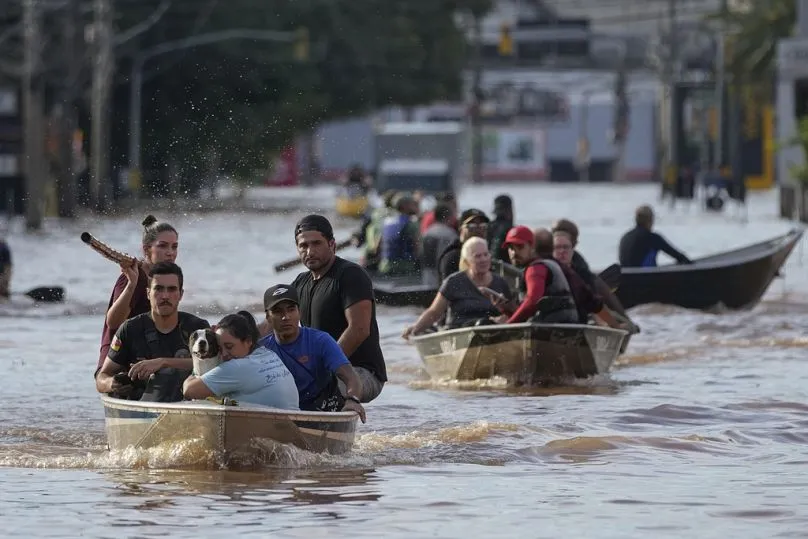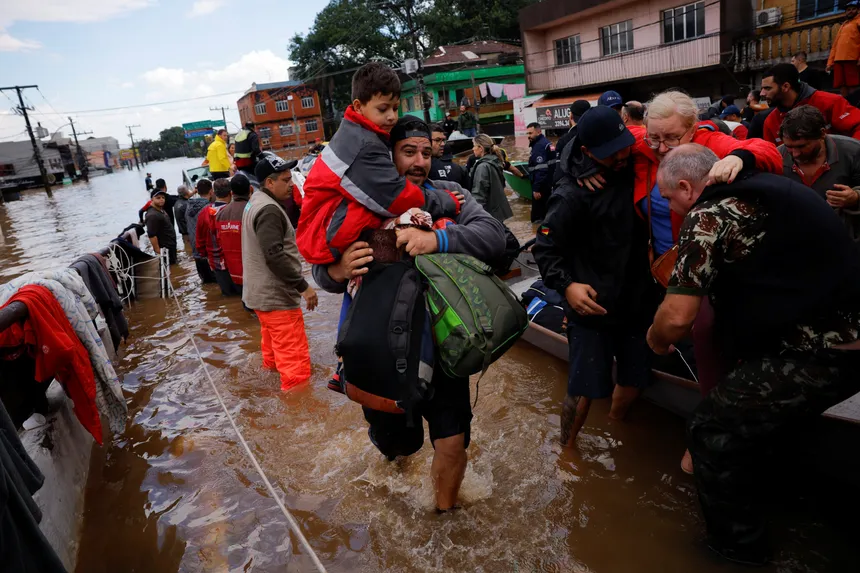The southern Brazilian state of Rio Grande do Sul is reeling from the aftermath of record-breaking floods that have killed 37 people, with another 74 still missing. The disaster has left thousands of residents forced to flee their homes in search of safety. This is not the first time the region has been affected by such a disaster, as heavy rainfall events in July, September, and November have already taken 75 lives this year.
According to the Brazilian Geological Service, the flooding statewide has surpassed that seen during a historic 1941 deluge. In some cities, water levels have reached their highest point in nearly 150 years, leaving residents struggling to cope with the aftermath. The town of Feliz, located 50 miles from the state capital, Porto Alegre, was particularly hard hit when a swollen river swept away a bridge connecting it to the neighboring city of Linha Nova.
The flooding has also left much of the state without basic services, including electricity, communications, and water. More than 23,000 people have been forced to leave their homes, with many stranded families relying on helicopters for rescue. Residents are struggling to provide updates to their loved ones living in other states, with many areas still cut off from the outside world.
Governor Eduardo Leite has warned that the situation in Porto Alegre is expected to worsen, urging residents to remain vigilant. “As a human being, I am devastated inside, just like every gaucho is,” he said. “But as governor, I am here steadfast and I guarantee that we will not falter. We are doing everything with focus, attention, discipline and outrage, to ensure that everything within our reach is done.”

The flood is just the latest in a series of extreme weather events to hit Rio Grande do Sul, with scientists pointing to the climate phenomenon El Niño as a contributing factor. El Niño is a periodic warming of the surface waters in the equatorial Pacific region, which has historically led to droughts in the north and intense rainfall in the south.
This year, however, the impacts of El Niño have been particularly dramatic, with a historic drought in the Amazon. Scientists say extreme weather events are becoming more frequent due to human-caused climate change. As the state of Rio Grande do Sul struggles to recover from the devastating floods, it is a stark reminder of the urgent need for climate action.

